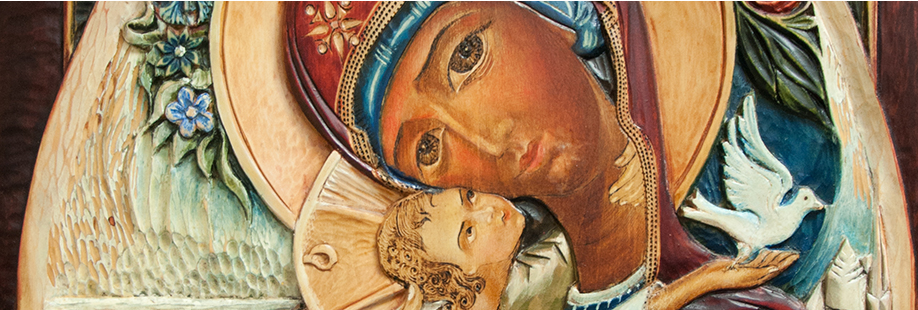
World Nativity Traditions
Preview

Creation Date
approximately 1996
Medium
paper
Exhibition Label
The tableau betrays an unusual degree of activity. The many exquisitely crafted paper-cut figures are busily tending to the many needs of human life. In contrast, the faces are like wooden masks, impassive and impenetrable, their movements those of puppets on a string. Joseph and Mary, on their way to Bethlehem, are passing through this human mass, unnoticed. Dressed like mourners, their passage makes no waves. It will not stop the mindless bustle. But at the end of the road two animals lie in waiting. Ox and ass are lying in waiting knowing their master. They understood what was to come, whereas the people of God did not understand (Isaiah 1, 3). This is how ox and ass became the most faithful companions of the Christ Child. Masks There is something forbidding about this scene. The many bright colors and angular movements of the exquisitely crafted-paper cut figures betray – at first glance – an unusual degree of activity, an almost joyful busyness in tending to the many needs of Mother Earth. But look at their heads with their immobile faces and flat hat tops. They all look alike: faces that are no real faces but wooden masks as impassive and impenetrable as their hats are dull and without flourish. All at once we realize that these are marionettes, puppets on a string, obeying orders given by an invisible puppeteer. Joseph and Mary traveling to Bethlehem for the great event will not be able to avoid this "Brave New World." Dressed like mourners they know only too well that their passage will make no waves; it will not stop the mechanisms of mindless bustle – or will it? There is one sign of sure hope. At the other end of the grueling scene two animals, ox and donkey, lie in waiting. Faithful companions of the Christ child from the beginning of Christmas lore on, they will provide attention and warmth that humans are not always ready to give.
Description
Handmade cut and folded paper figurines depicting the nativity of Jesus, created sometime around 1996 in Quito, Ecuador by Eduardo Borja Cruz. Exhibition label originally written by Fr. Johann G. Roten, S.M. for exhibit held at Roesch Library, University of Dayton.
Rights
This material may be protected by U.S. (Title 17, U.S. Code) and/or international copyright law. The material is available for personal, educational, and scholarly use. It is the responsibility of the researcher to locate and obtain permission from the copyright owner(s) or heirs for any other use, such as reproduction and publication.
Keywords
crèches, nativity scenes, nativities, At the Manger, figurines, Jesus Christ, paper sculpture, Quito (Ecuador)


